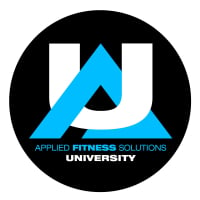Everyday Mobility- The Seated Forward Fold
 AFS Education
Administrator, Moderator, Practitioner admin
AFS Education
Administrator, Moderator, Practitioner admin
Today we are going to take a look at one of the most commonly used stretches: The Seated Forward Fold aka hamstring stretch (bum, bum, bum!).
We’re going to break it down to understand: the purpose of the stretch, how to get the most out of it, and how the stretch applies to your workouts.
First off, what is the purpose of this stretch? The biggest goal of this movement is mobilizing and stretching through the hamstrings and the pelvis. If you think of the way the hamstrings tie together the pelvis and the legs (side note: “hamstrings” refer to the muscles: biceps femoris, semitendinosus and semimembranosus), these muscles are pretty integral to our daily life. Movements like walking, sitting, going up stairs, picking up your kids, these are all movements that require a balance of mobility, stability, and strength in the hamstrings and pelvis. Because our bodies are constantly adapting to the patterns of movement that we put them through, if you spend a lot of time in a position where the hamstrings are short (sitting, driving), then you might need a little extra work on stretches that help to lengthen them.
How do we get the most out of this stretch? The most important thing to take into consideration with this stretch is that we are moving from the hips rather than the back. Often times we get so fixated on this idea “if I could just get my head a little closer to my shins…” that we miss the whole point of the movement. This causes excessive rounding through the back and shoulders, with a continually fixed position of the pelvis, and continued shortening of the hamstrings.
Next time you try this movement, imagine that you have a wooden dowel that runs from your tailbone to the back of your head. As you move to fold forward, keep the wooden dowel in mind, if it was there, it should stay directly in contact with both the back of the head and the tailbone. This will cause you to move into the stretch by tipping the hips forward, causing the hamstrings to lengthen and the pelvis to mobilize. You might not go as far you normally do, but that’s okay! Moving in this way will not only help you to get more out of the stretch, it will also help protect your back.
How does this movement apply to your workouts? If you look at the picture above, you might notice: that seated forward fold looks a lot like an RDL. In many ways, the principles are the same in both movements: we need the pelvis to tilt slightly anteriorly to help lengthen the hamstrings into the correct position. The same applies for the back. We want to avoid rounding of the spine (left image below) so that we can keep unnecessary pressure off of the discs, and in the case of an RDL, the proper position will allow us to isolate the movement into the activation of the hamstrings rather than the musculature of the lower and mid back. Next time you do an RDL, think about your tailbone pointing toward the wall behind you, and that wooden dowel along your back, connecting to your tailbone and the back of your head.
Hopefully this article gave you a better understanding of the principles of one of our most common stretches, will help you feel better prepared to correct common mistakes, and will help you to think differently about your movements while exercising. Feel free to stop by any of our many Mobility Solution classes where you can get all the benefits of stretching in conjunction with your regular workouts!






Comments
Thanks for the tips!!!! Very helpful!!
And thanks for explaining with pictures!